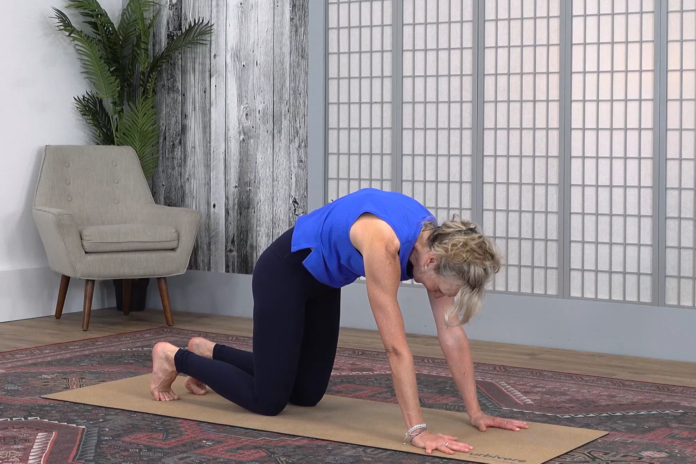7 Yoga Poses That Can Aid Digestion
Did you know that yoga can help you poop?
Indeed, when it comes to digestion, yoga can be a great friend. Whether you suffer from bloating, digestive issues, constipation, or discomfort, stimulating the stomach with gentle yet powerful asanas can be a lifesaver.
Ready to roll out the mat and see for yourself how yoga can help?
Top 7 Yoga Poses and Classes to Help You Rest and Digest
If you’re looking to strengthen or stimulate your digestion through yoga, there are some poses that are great for digestive functions and relieving discomfort from bloating and constipation. These poses range from gentle twists to soothing stretches that can help increase blood flow and ease the digestive process.
1. Marjaryasana-Bitilasana (Cat-Cow Pose)
With two absolute beginner-friendly poses, the cat-cow sequence gently massages the abdominal organs by interchangeably stretching and contracting your abdominal muscles. It promotes both movement and relaxation within the digestive tract.
How to do it: Start on your hands and knees in a tabletop position. As you inhale, arch your back and lift your head and tailbone towards the ceiling (cow pose). On your exhale, round your back towards the ceiling, tuck your chin towards your chest, and draw your belly button towards your spine (cat pose). Repeat the same movement for 5-10 breaths.
Recommended class: Rachel’s Hatha Yoga for Better Digestion
2. Parivrtta Trikonasana (Revolved Triangle Pose)
The revolved triangle pose helps to stimulate digestion through twisting, which can help maximize the contact of the food within the intestines and speed up the movements of the food contents through the colon.
How to do it: Stand with feet wide apart. Position your feet like train tracks—your front foot (let’s say right) towards the front of your mat, while your back foot (left) is at about a 60-degree angle. Then, place your left hand on your right foot or a block, and stretch your right arm (along with your gaze if it feels comfortable for your neck) towards the ceiling, opening your chest. Hold for five breaths, then switch sides.
Note: If standing up doesn’t suit you, this pose can also be done lying down!
Recommended class: Araba’s twist-filled hatha sequence
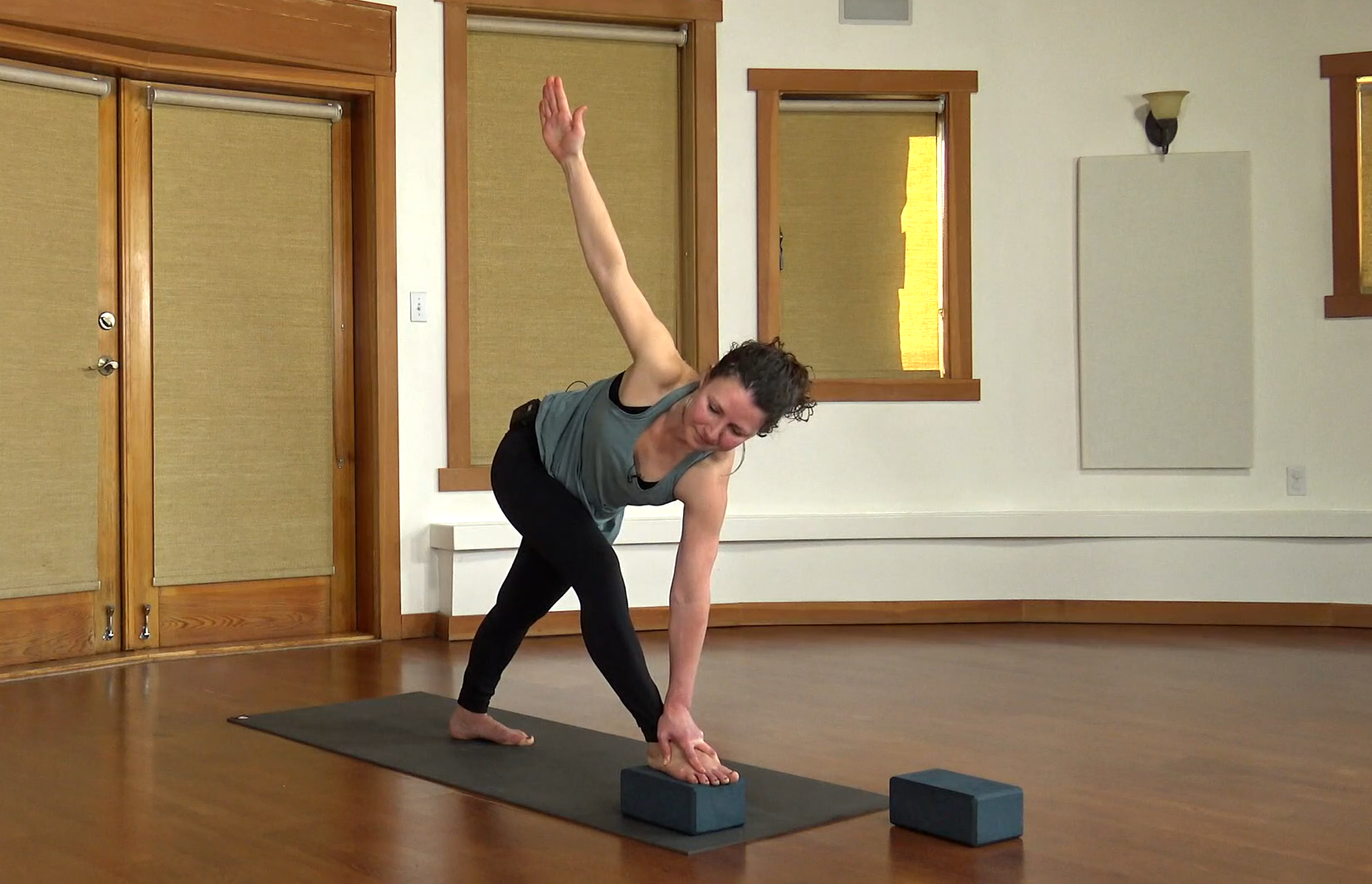
3. Pavanamuktasana (Wind-Relieving Pose)
With the name being such a giveaway, there’s not much left to say about this pose. If you suffer from bloating or constipation, give it a try as it may help you release trapped gas in the large intestine, easing discomfort.
How to do it: Lie on your back, bring your knees towards your chest, and wrap your arms around them. Bring your head towards your knees and gently rock back and forth or side to side to increase the massaging effect on the intestines. Do this for a few minutes, then release. Repeat five times.
Recommended class: Araba’s Pawanmuktasana series
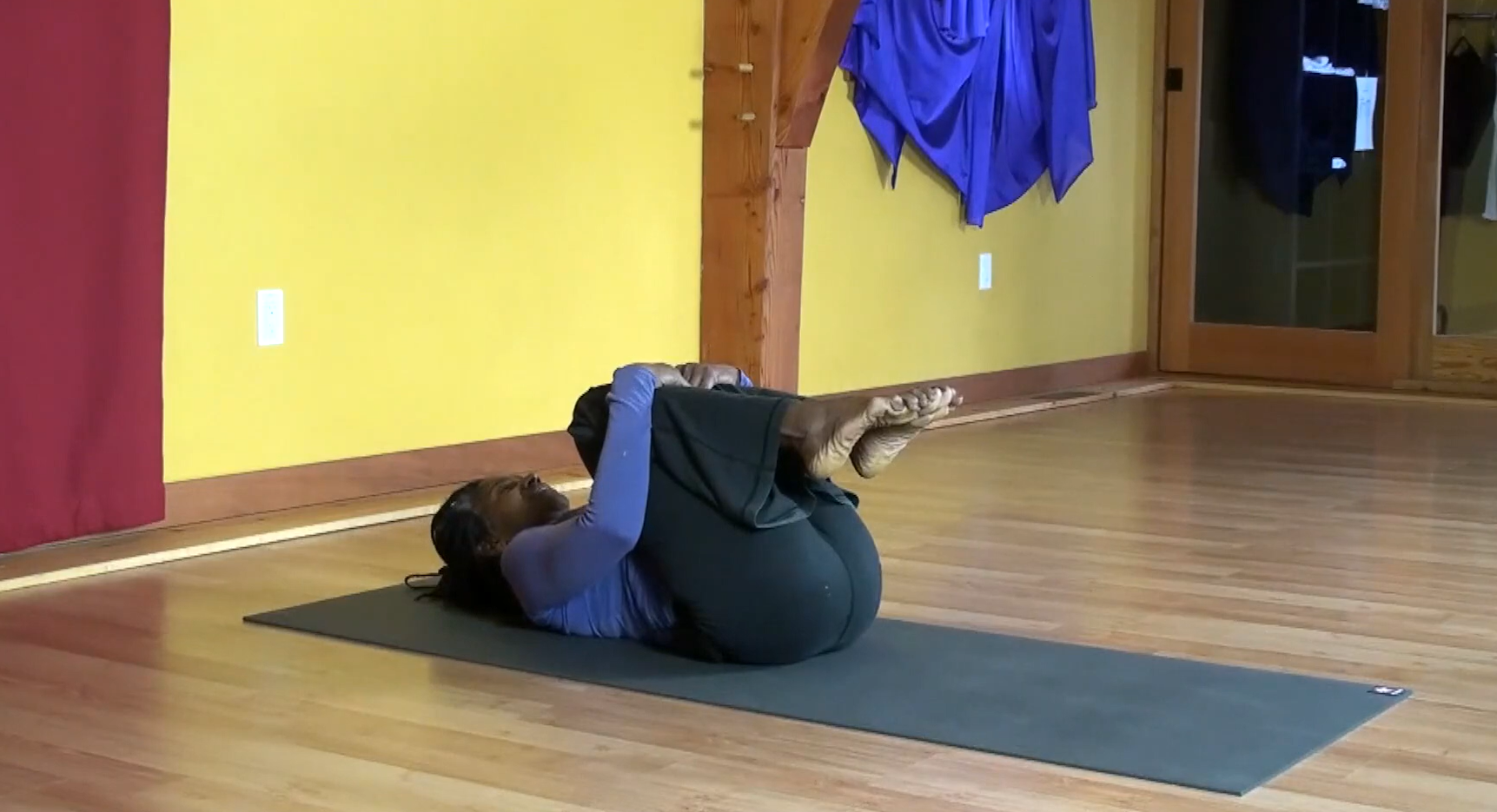
4. Baddha Konasana (Butterfly Pose)
The butterfly pose has a very similar effect as the wind-relieving pose. It helps you stimulate bowel movements by relaxing and compressing the lower abdomen.
How to do it: Sit with your spine straight and legs spread straight out. Bend your knees and bring your feet towards the pelvis. Connect the soles of your feet. Hold your feet with your hands and gently bounce your knees up and down to release your hips if it feels good, then fold forward over your legs. You can use your elbows as levers to press your legs down or place your hands on the floor behind your seat. Do this pose for five deep breaths or more, then release.
Recommended class: Crista’s butterfly practice
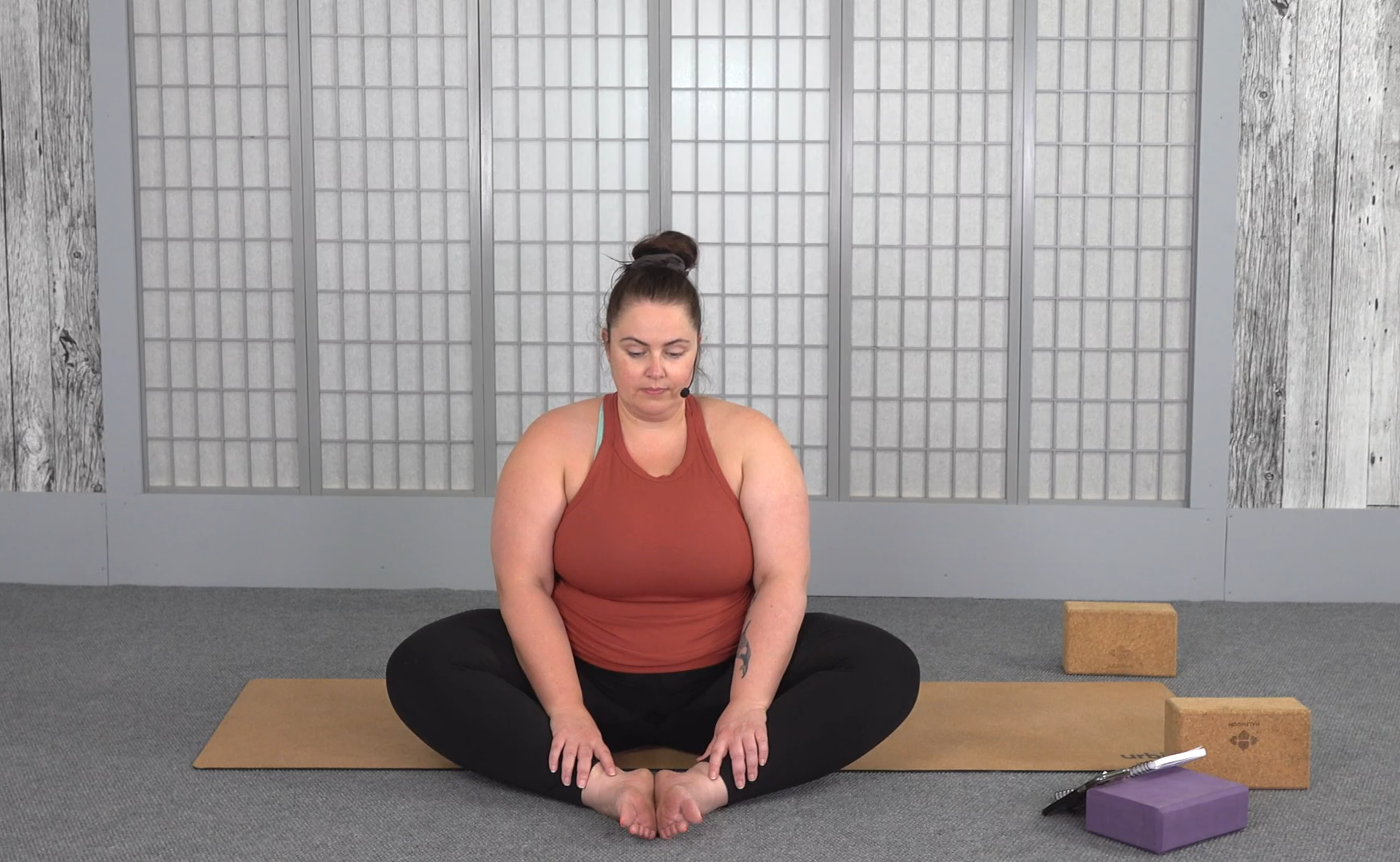
5. Ardha Matsyendrasana (Half Lord of the Fishes Pose)
Ardha matsyendrasana, also known as the half lord of the fishes pose, is a seated spinal twist that offers many benefits but is particularly good for spinal mobility and digestion. It is named after the sage Matsyendranath, who is said to be one of the first to bring the knowledge of hatha yoga to the human world. The pose encourages the natural detoxification processes of the body through the deep twist’s pressure on the abdominal organs.
How to do it: Sit with your legs extended in front of you. Place your right foot on the outside of your left thigh. Bend your left knee, bringing your left heel by your right glute, or stay with your leg straight if this feels better on your knees and hips/back. Place your right hand on the floor behind you and hug your right knee with your left arm, or bring your left elbow outside your right knee. Look over your right shoulder.
Recommended class: David Procyshyn’s Bound Half Lord of the Fishes Pose demonstration
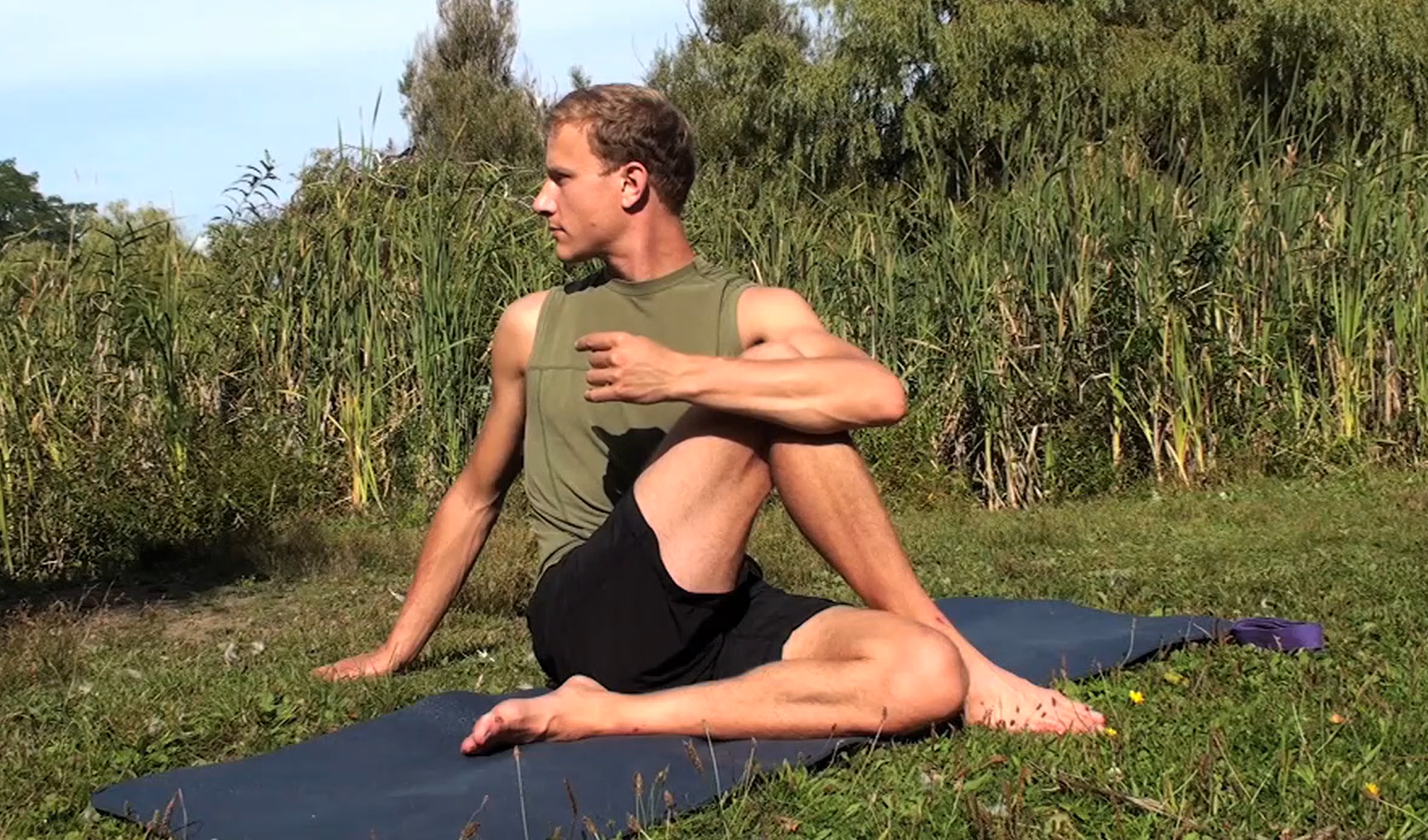
6. Bridge Pose (Setu Bandha Sarvangasana)
Bridge pose provides incredible stimulation to the abdominal organs and improves overall digestion. It’s great for relaxing the belly and creating space for the internal organs, which will allow you to take deep abdominal breaths.
The pose also helps strengthen the back muscles while stretching the chest, neck, and spine.
How to do it: Lie on your back with your knees bent and feet flat on the floor, hip-width apart. Place your arms at your sides with palms facing down. Press your feet and arms firmly into the floor and lift your hips toward the ceiling. Clasp your hands under your back and extend through the arms to help you stay on the tops of your shoulders. Keep your chin down toward the chest, while squeezing the buttock toward the ceiling.
Recommended class: Julia Crouch’s backbending class entitled Back to Front
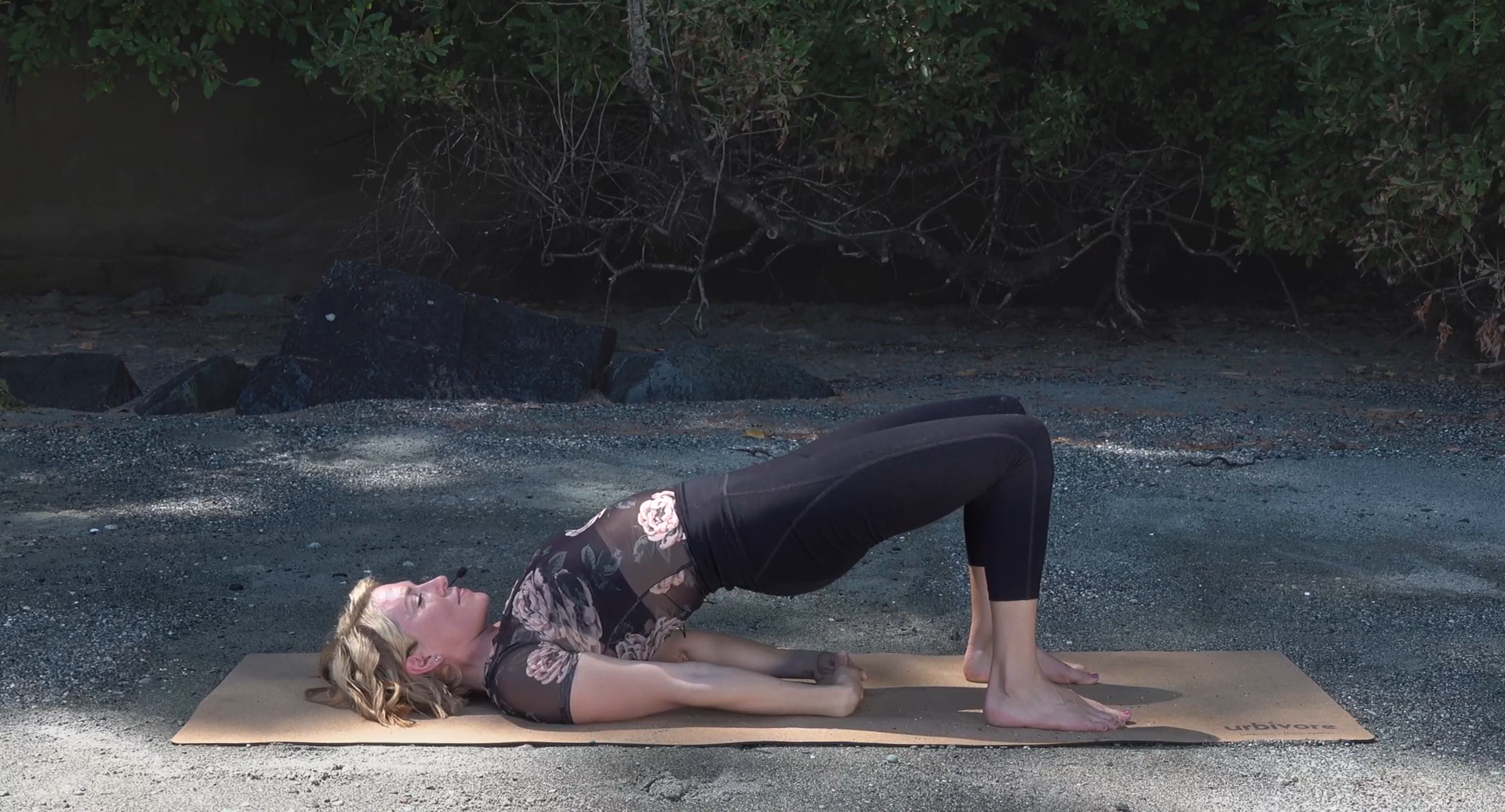
7. Nauli Practice (Abdominal Churning)
Nauli is one of the kriyas or shatkarmas in yoga, used for purification. It’s believed that the exercise cleanses the abdominal region which helps in increasing overall health and wellbeing.
In other words, it’s a deep breathing and cleansing technique that uses rolling movements to the abdomen muscles to provide a gentle, yet much needed massage to our internal organs.
Some also say that nauli stimulates the body’s digestive fire, also known as agni, which is very beneficial to digestion.
How to do it: Stand with your feet shoulder-width apart, knees slightly bent, and hands resting on your thighs. Take a deep breath in and then exhale completely, emptying your lungs. Perform uddiyana bandha by pulling your abdomen in and up towards your spine, creating a hollowed-out look. Then, try to move the abs from side to side. Don’t be discouraged if you don’t get it in the beginning. It’s really hard to isolate the muscles and start moving them in that position, but with practice you’ll get there! Maintain breath retention (holding the breath out) while performing the churning motion. This also may require practice to coordinate effectively.
After a few churning cycles, release the abdominal lock, stand up straight, and inhale gently.
To learn how to perform Nauli, watch Julia’s morning class.
Recommended class: Julia’s Morning Class to Nourish Your Body for the Get-Go.
8. Savasana (Corpse Pose)
Though it might not seem directly related to digestion, learning how to relax deeply in savasana will help you let go of the accumulated stress and tension within your body that may negatively affect your gut. Doing mindfulness practices, such as conducting a full-body scan during savasana, can be even more beneficial.
How to do it: Lie flat on your back, arms at your sides, palms up, and legs spread slightly apart. Close your eyes and breathe naturally. Observe your breath. Allow your body to feel heavy and sink into the ground. Bring your attention inward and focus on the sensations coming from within. Stay in this position for 5-10 minutes. You can also follow a guided meditation or do a full-body scan while in savasana.
Recommended class: Helen’s absolute beginners series that will help you find your savasana
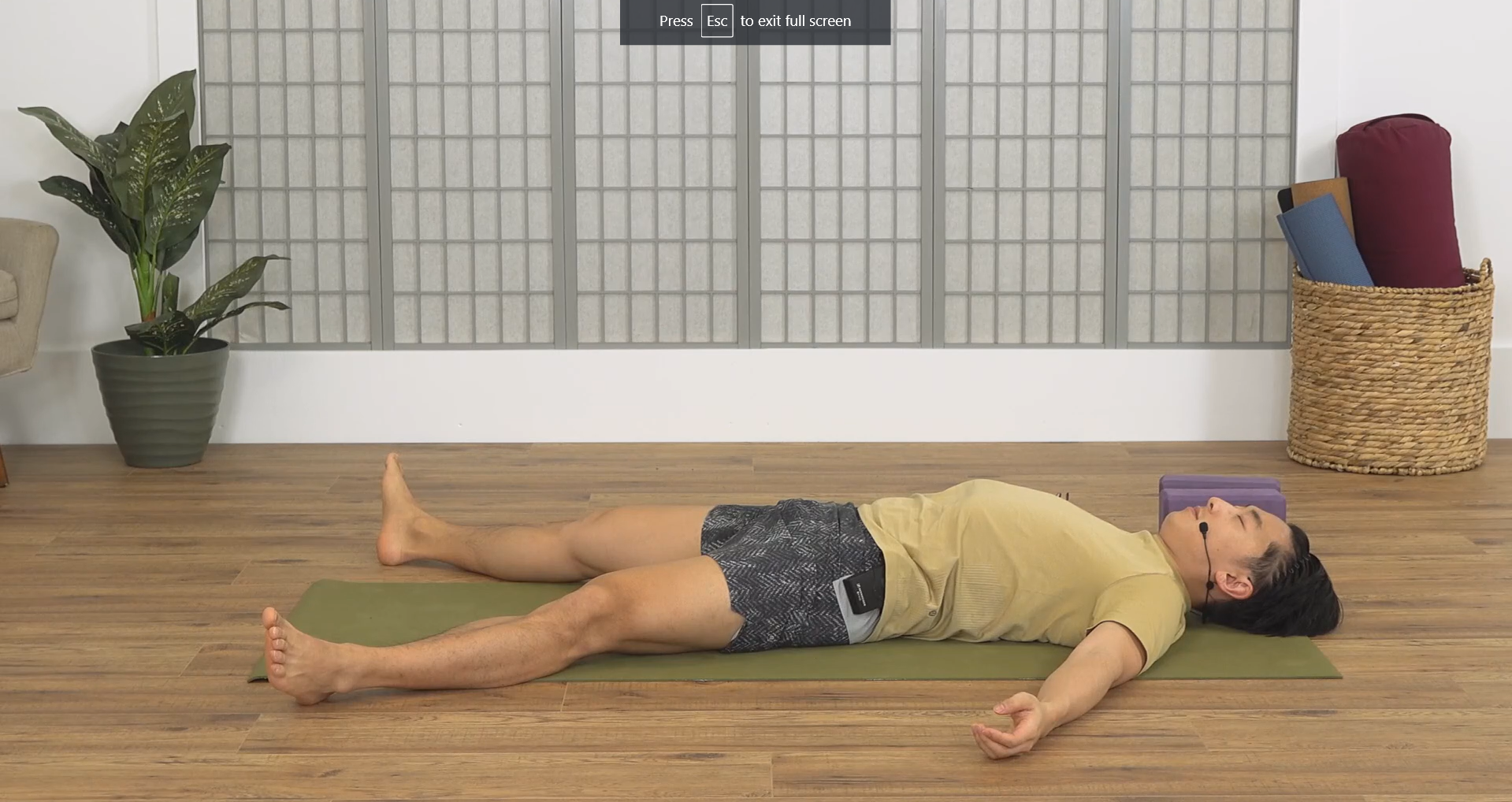
Bonus: Guided Meditations
Meditations and breathing techniques help you relax, which can soothe the gut and motivate it to resume regular function. Incorporating guided meditations is a proactive step toward managing your gut health.
Meditations work by relaxing your body and activating the parasympathetic nervous system, which is known as the “rest-and-digest” system. This is the system that tells the body everything is okay and to focus on digesting the food. It’s the opposite of the sympathetic nervous system, which keeps the body on high alert (stressed). By activating the relaxing, parasympathetic nervous system, meditations, and yoga in general, become a great tool for maintaining efficient digestive function.
Therefore, if you have an over-active digestive system, yoga can help to regulate it as well.
The following classes and guided meditations can be a great start:
Beyond the Mat
With these yoga poses, you’ll be on your way to better digestion. Incorporating gentle twists, soothing stretches, and deep breaths into your daily or weekly routine will help you ease digestive discomfort and lay the foundation for long-term gut health.
But, it doesn’t stop with yoga—drinking plenty of water to stay hydrated, managing stress, and maintaining a balanced diet are some of the other pieces of the puzzle.
Finally, consistency is the glue that ties everything together. So, roll out your mat, breathe deeply, and let yoga work its magic.


